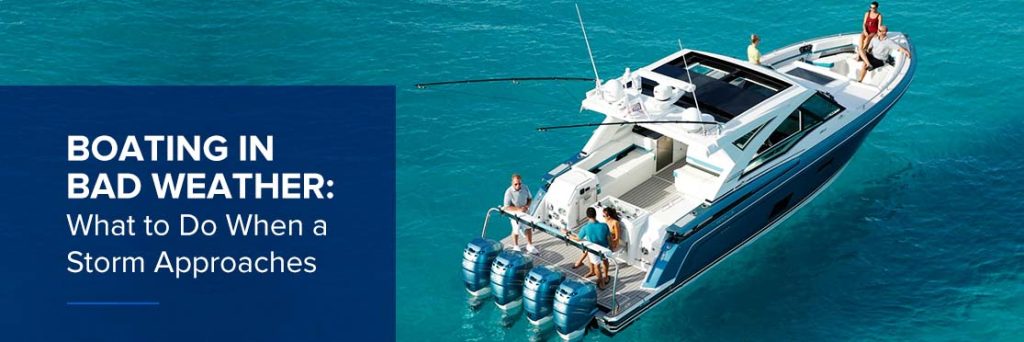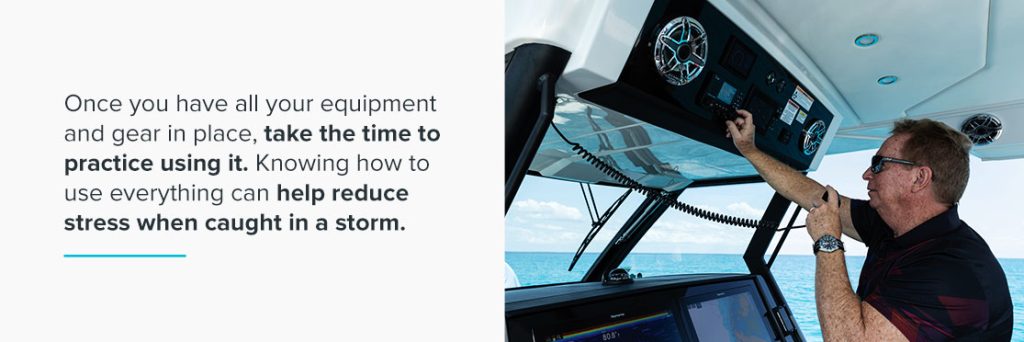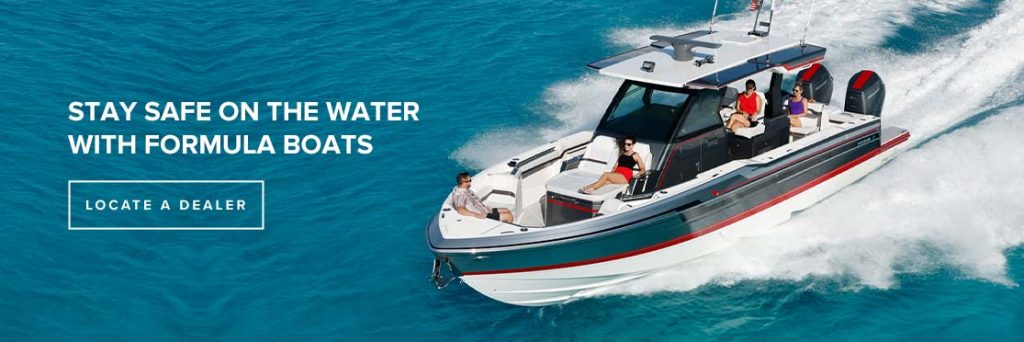
Being out on the water with friends and family is fun and exciting regardless of the activities you have planned. However, weather can be unpredictable and change suddenly.
Boating in stormy weather can be pretty dangerous and may result in running ashore, overturned boats, lost supplies, boat damage, collisions and passengers falling overboard. Even experienced boat owners can run into trouble during a storm, so you must know what to do in the case of stormy conditions.
Be Prepared
Preparedness is critical in boating. Before you head out onto the water, ensure your boat is fully equipped for any emergency. You should also always look at the weather forecast to ensure it is safe to head out onto the water.
Check the Weather
Checking the radar is a simple yet essential step to take before boating. Checking the forecast, especially if you are heading to sea, is the best way to avoid getting caught in bad weather. You can look for any weather warnings and advisories on the National Weather Service before you leave. You can also use several weather apps to monitor the weather while on the water. Whichever option you choose, there are some marine weather terms you should look out for:
- Small craft advisory: Winds are forecast to be between 20 and 33 knots. These winds often indicate poor conditions for smaller vessels.
- Gale warning: Winds are forecast to be between 34 to 47 knots. These conditions can be dangerous for any size boat.
- Storm warning: Winds are forecast to reach 48 knots or more.
- Tropical storm warning: A tropical storm may be approaching, and winds may reach up to 63 knots.
- Hurricane warning: Winds may reach 64 knots or more due to a hurricane.
- Special marine warning: There may be hazardous weather conditions that last two hours or less with winds of 34 knots or more.
While you are out on the water, you should continue to monitor the weather. Watch the sky, waves and wind for any changes that may indicate an approaching storm. You can also listen to one of the seven National Oceanic and Atmospheric Administration (NOAA) channels that provide regular updates on the weather, including wind speed and direction, temperature, humidity, wave conditions and barometric pressure.
Prepare Your Boat
The next part of being prepared is having the proper supplies and equipment on your boat. These supplies provide additional safety when boating in bad weather. You can also use them during other emergencies, making preparations for boating trips easier. Besides the legally required life jackets, some of the recommended boating equipment include:
- First-aid kits: Marine first-aid kits are waterproof and include supplies for more serious injuries. Some may also have whistles and flares that are essential if you need help when caught in a storm.
- Harnesses and fasteners: Harnesses keep everyone on board secure when there are large waves. Some life jackets come with harnesses. If yours do not, you’ll need to invest in harnesses for your boat. Fasteners are essential for keeping equipment in place to avoid injuries and broken equipment.
- Emergency beacon and VHF antenna: An emergency position-indicating radio beacon (EPIRB) has an internal GPS that relays your location to search and rescue satellites should you need assistance. If your primary antenna is damaged or disabled during a storm, you need an emergency VHF radio to help you contact authorities or rescuers.
- VHF Radio: Even in the age of cell phones, VHF radios are critical for boats. They are waterproof, have a long battery life and can operate without a network.

Once you have all your equipment and gear in place, take the time to practice using it. Knowing how to use everything can help reduce stress when caught in a storm.
What to Do if Your Boat Is Caught in a Storm
Even the most prepared boater can get caught in a storm. Weather is unpredictable, and a storm can appear seemingly out of nowhere. There are a few crucial actions you can take that can help keep you, your passengers and your boat safe should you get caught in a storm or see a storm approaching:
Put on Safety Gear
If you see a storm approaching, ensure everyone is wearing life jackets, and secure them with harnesses if possible. Appropriate safety gear can help prevent anyone from falling overboard or being thrown around the boat in the rough waves. Even the strongest swimmers will struggle in storm waves, so everyone must have a life jacket. Switch your lights on so other boats or rescuers can see you in the dark.
Secure or Stow Equipment
Loose equipment, gear or other objects may get tossed around in rough seas and can knock passengers unconscious, push them overboard and cause serious injuries. Ensure that anything loose is safely stowed away, and use fasteners to ensure they are adequately secured.
Close Windows and Latches
If your boat has windows in enclosed spaces such as the cabin, you need to close them in a storm. Flooded cabins can weigh down your boat and increase the risk of sinking.
Look for Safe Harbor
Storms can be short, so it is possible to wait them out in place. If you want to head to shore, take note of any ports or harbors before you set out for the day. Knowing where these locations are can help you decide if you want to wait the storm out. Asses the storm to avoid heading toward its center.
Watch for Lightning
If lightning strikes your boat or even the water near your boat, you may be electrocuted if you touch anything metal. Gather everyone in the center of your cockpit or cabin away from metal. Lightning can also damage your electrical equipment and radio. Protect them by switching off and unplugging them.
Slow Your Boat Speed
Slow your boat speed as safely as possible. Ensure you have enough power to maintain your headway and steering. Let the water outrun your boat to ensure a more comfortable ride and keep control of your vessel. This can also reduce the risk of broaching. You can also maximize drag to help you control your position more effectively. Use your anchor or a bucket attached to a rope thrown into the sea.
Steer at an Angle
The safest way to head into waves is at a 45-degree angle off the bow or stern. Approaching waves at an angle allows the boat to rise safely and fall over waves while keeping the propeller in the water. It also prevents your boat from getting swamped by waves. Avoid taking on waves beam on — you may experience rolling or capsizing if you are in a smaller vessel.
Take Stock After the Storm
Once the storm has passed, you need to do a few things. Check your position, see if your passengers have any injuries and look for any damage to your boat. Communicate via radio to the relevant authorities if you need a tow or medical assistance. Secure or repair anything that may be damaged. Rest, eat and drink water before heading back to shore or continuing your journey.

Stay Safe on the Water With Formula Boats
Being prepared is the best way to handle bad weather while boating. Choosing the right boat and accessories can make a considerable difference. Our FormulaFlex Program allows you to customize different aspects of your boat, including the hull, outboard, electronics and optional features such as GPS and navigation.
Explore our range of boats or contact your nearest Formula Boats dealer today!
